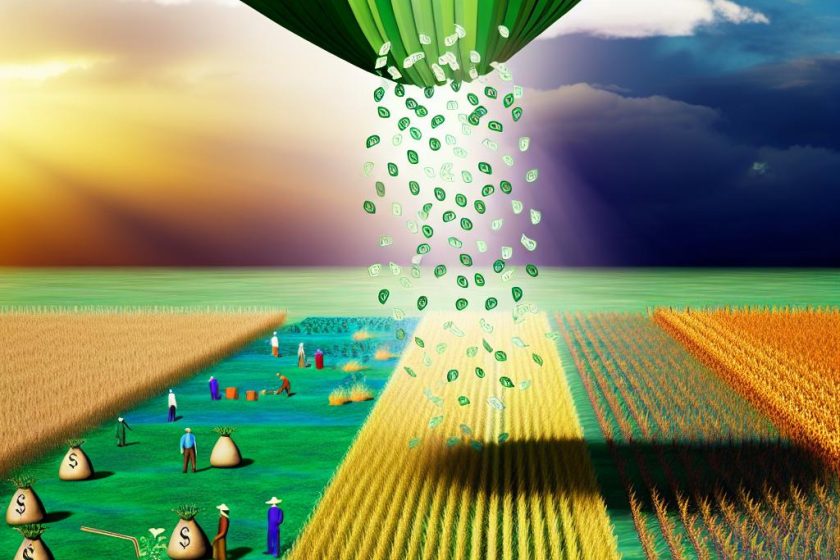How Government Subsidies Affect Agricultural Commodities
By : Admin -

Understanding Government Subsidies in Agriculture
Government subsidies are financial aids provided by the government to support an industry, often aimed at promoting economic and social policies. In agriculture, these subsidies are designed to stabilize food prices, ensure a steady food supply, and support farmers’ incomes. The impact of these subsidies on agricultural commodities can be significant, affecting production, pricing, and trade patterns.
The Purpose and Mechanism of Subsidies
Agricultural subsidies serve a critical role within the economic framework of many countries. They aim to ensure that agricultural production remains both viable and profitable for farmers, who can face severe market fluctuations due to unpredictable variables like weather conditions, pests, and global market shifts. Through these subsidies, governments act as a stabilizing force, providing a financial safety net that encourages ongoing agricultural activity.
Subsidies are administered through various channels. Direct payments provide immediate financial resources to farmers, ensuring cash flow and liquidity, which are essential for purchasing inputs like seeds and fertilizers. These payments are often based on historical production levels or acreage, providing a predictable income source in an otherwise unpredictable market. Input subsidies, which lower the cost of farming essentials, directly impact a farmer’s cost structure, improving the economic feasibility of large and small-scale farming operations alike.
The Role of Subsidies in Price Stabilization
One of the primary objectives of agricultural subsidies is to stabilize commodity prices. By providing financial support to farmers, governments can help mitigate the effects of volatile market conditions. Subsidies might be offered through direct payments or as input subsidies, helping farmers cover costs for seeds, fertilizers, and other essential resources.
Stabilizing prices is not just an economic issue, but also a social and political one, as food security is crucial for national stability. Lower price volatility protects farmers from sharp losses and helps consumers by providing consistent food prices, reducing the risk of inflationary pressures that can erode purchasing power.
Impact on Production and Supply
Subsidies can lead to an increase in production by making it more economically viable for farmers to cultivate certain crops. This financial support reduces the risk associated with farming, encouraging farmers to invest in expanding their operations. While this can enhance the supply of specific commodities, it can also lead to overproduction, affecting market dynamics and prices.
Overproduction creates a scenario where supply outstrips demand, potentially leading to lower prices and wasted produce. In response, some governments may implement measures such as set-aside programs, which pay farmers to not cultivate certain portions of their land, thereby controlling production levels to maintain a balance between supply and demand.
Moreover, the focus on certain subsidized crops can lead to less biodiversity in agriculture, as farmers gravitate towards growing crops that are financially supported by government policies. This trend could impact soil health and ecosystem diversity, with long-term consequences for agricultural sustainability.
Influence on International Trade
Government subsidies can have a significant impact on international trade. By lowering production costs, subsidies allow domestic farmers to offer their products at competitive prices on the global market. This can affect the economies of countries that do not provide similar subsidies, leading to trade imbalances or tensions. For more insight into how subsidies influence trade policies, exploring resources such as the United States International Trade Commission might be beneficial.
Subsidies skew the playing field in international markets, often creating challenges for producers in countries with lower levels of financial support. These dynamics can lead to accusations of unfair trade practices and result in disputes within international trade organizations. Countries may be spurred to enact protective tariffs or quotas, further complicating international trade relations.
Furthermore, the disparity caused by subsidies can lead to dependency on imported goods in less subsidized economies, possibly compromising food sovereignty. Developing nations often face significant challenges competing with subsidized agricultural products, which can undercut domestic markets and discourage local agricultural development.
Challenges and Criticisms
Despite their benefits, agricultural subsidies also face criticism. They may distort markets, creating advantages for larger, more established farmers, while smaller farms struggle to compete. Additionally, subsidies can encourage monoculture practices, which may not be environmentally sustainable in the long term.
Larger agrobusinesses often reap the most significant benefits from subsidies due to their ability to produce in bulk and spread out fixed costs over larger production volumes. This concentration of benefits can exacerbate income disparities within the agricultural sector and lead to the consolidation of farmland under fewer, larger owners.
Monoculture, driven by subsidies favoring certain crops, can lead to a decline in agricultural diversity, exposing crops to increased vulnerability from pests and disease, over-reliance on a narrow range of crops, and susceptibility to market disruptions, all of which threaten long-term agricultural sustainability.
To mitigate these issues, reforms are often suggested. Policymakers may aim to reallocate subsidies towards more sustainable practices or prioritize support for small and mid-sized farms to encourage diversification and ecological farming methods.
Policy Reassessment and Future Considerations
Ultimately, the effects of government subsidies on agricultural commodities are multifaceted, influencing aspects such as market stability, supply, and international competitiveness. Ongoing reassessment of these policies is crucial to ensure they achieve their intended objectives without negative repercussions.
As global challenges such as climate change and food security intensify, the role of subsidies in promoting sustainable agricultural practices will become increasingly important. Policies may need to adapt to prioritize environmental considerations, encourage innovation in agricultural technology, and facilitate resilience against environmental and economic shocks.
While subsidies will continue to play a crucial role in agricultural policy, balancing economic objectives with environmental and social priorities will be key to ensuring the sustainable development of the agricultural sector in the future. Government interventions must be dynamic, addressing current needs while being versatile enough to adapt to future challenges.
This article was last updated on: August 21, 2025